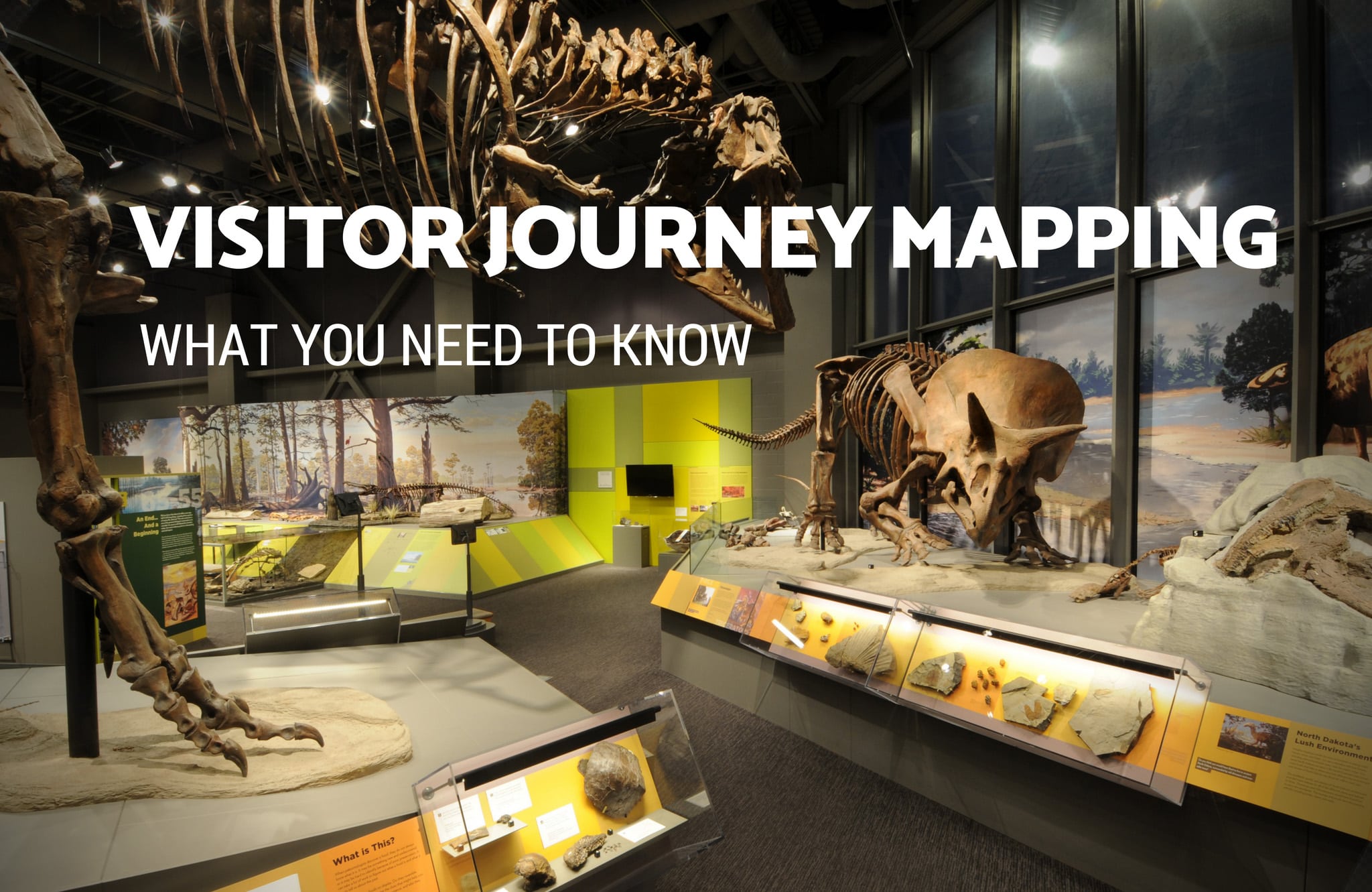Visitor Journey Mapping; What You Need To Know
Thursday, September 16, 2021 11:00 AM by Grace Carroll in Design and Planning

Museums, historic sites, parks, welcome centers, etc. all have one thing in common…visitors. Visitors are why these places exist and have a purpose in the first place. A new focus on visitor experience has institutions and businesses taking a closer look at the experience they provide and whether or not it meets the visitors’ wants and needs. One way to do that is with journey maps. Visitor journey mapping is a tool used to track a visitor’s path and perspective through an entire experience from start to finish. This can be done on a large scale, for an entire museum visit, a medium scale, through an exhibition, or even a very small scale, through a specific interactive. The purpose is not only to gain the perspective of your visitors but to understand what your institution is doing well and what areas may need improvement.

Framework to build a visitor journey map. Touchpoints
The first step is to determine the steps or “touchpoints” that are currently in the visitor experience that you provide. Touchpoints are every moment where a visitor interacts with someone or something at your site, making a decision or gathering information; e.g. purchasing tickets, parking, entering an exhibit, engaging with social media, etc. Start listing all these moments or sketch icons to better visualize the journey, eventually working the icons into a sort of flowchart. Take a look at this example from the Exploratorium. This is a finished map that most likely went through many revisions, a good place to start is post-it notes on a wall.
Highs & Lows
The next step after listing out all the touchpoints is to evaluate them using a grading system; e.g. A-F, 0-10 or smiley face emojis. Walk through the journey and talk about the experience at each touchpoint, breaking the information down even further. You can list all the good, bad, medium aspects under each touchpoint and then give it an overall grade. This process will help to highlight potential pain points that need to be addressed and hopefully showcase some touchpoints that are excelling and providing an awesome experience.
The Aspirational Map
Now it’s time to plan some changes! There are two options: begin adjusting the map you’ve just created or start fresh and create an ideal, aspirational map with all the touchpoint experiences you would like your site to have. An aspirational map will keep you inspired and focused when planning future projects and budgeting goals. Maybe you notice that money which was budgeting for something else would actually be better suited for a different project; i.e., a touchpoint that scored low on your grading scale. Is there an area of signage/wayfinding that is proving to be more confusing than helpful? Is there an exhibit element/interactive that is being missed? Knowing this information can help you move forward and create a plan of action. Are these things you are able to tackle in-house? Or should you begin to look for a company to work with? Be sure to celebrate the areas your site excels at. Is there a program visitors seem to enjoy? Promote it even more!
Audience & Assumptions
While this exercise is something you can start with your staff, it is something that is best completed with the input of your actual visitors. You may notice that in order to fill some gaps you may begin to rely on assumptions. Assuming the experience of your visitors has the potential to ruin the entire exercise as you may be missing important pain points that you never knew existed or allocating money to fix an issue that doesn’t actually exist. The best resource is within your site! Use them! Take visitor surveys, observe visitor behaviors and trends, maybe start breaking up the journey maps for different types of visitors. Don’t shy away from an opportunity to make your journey maps more accurate while also getting to know your visitors. When visitors know you are looking for information on how to make their experience better they will be willing to give their input.
For those who work in museums or design for them, there is usually an ideal visitor flow or experience we want to design or we expect/hope is happening. The only way to know if we are right is to observe and record. Ask questions, evaluate and make smart and purposeful changes. Your visitors will thank you!
Want to learn more? Check out these resources!
Want to learn more? Check out these resources!
Creating Visitor Journey Maps for Historic Sites (useful for more than historic sites)
Share this on social networks